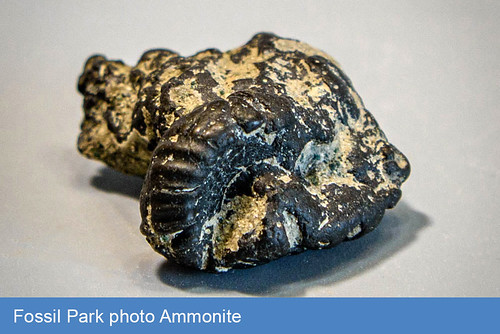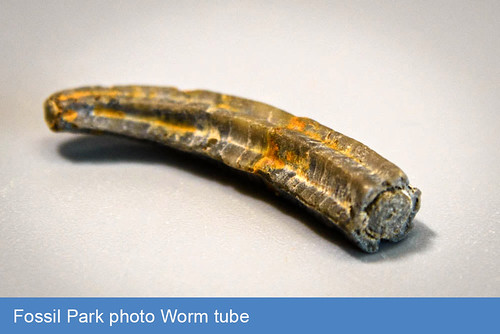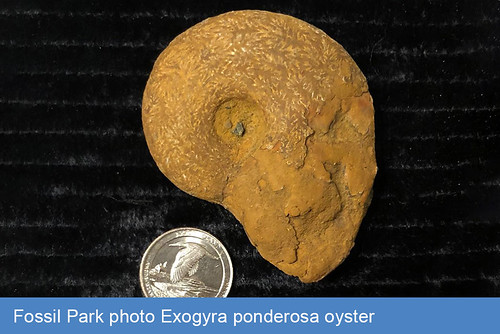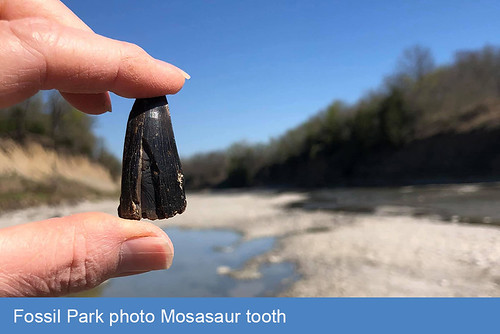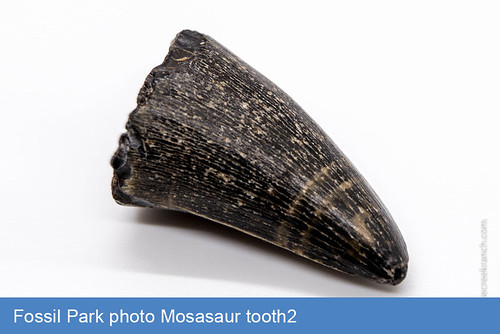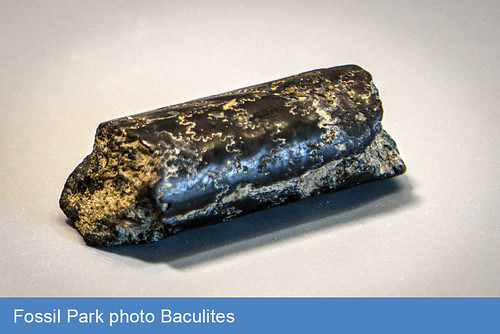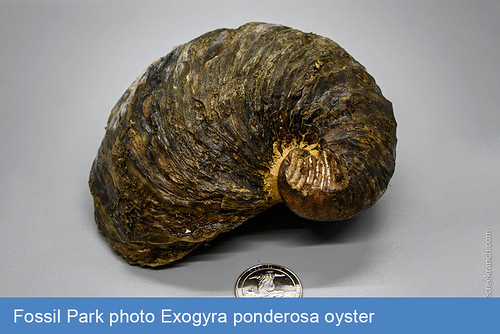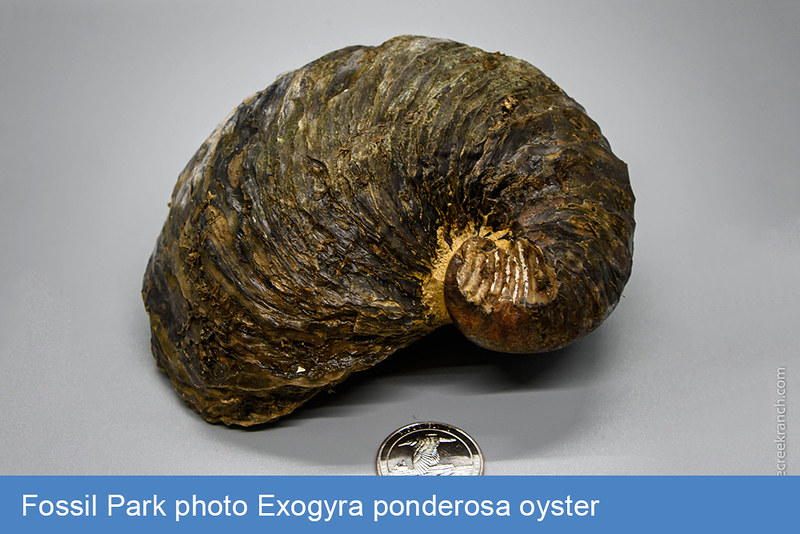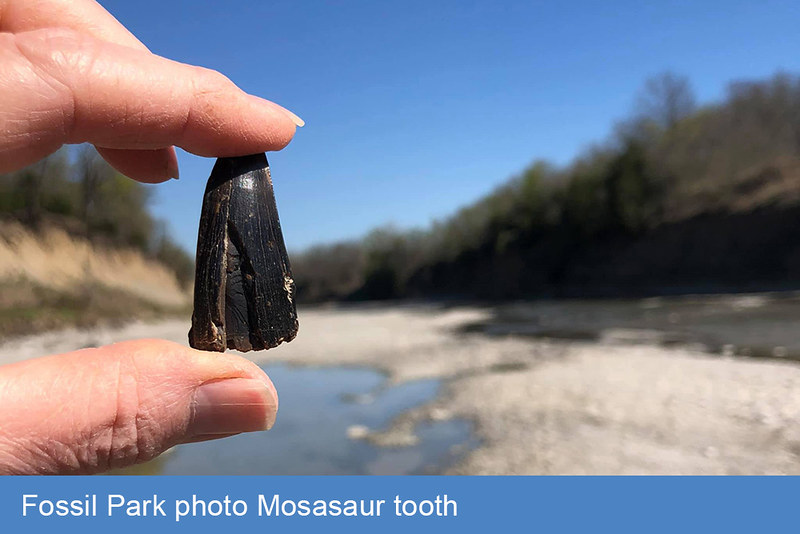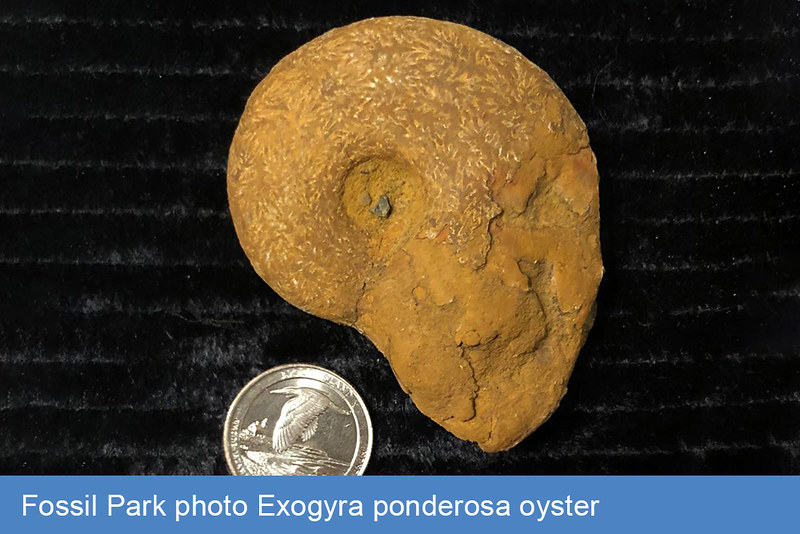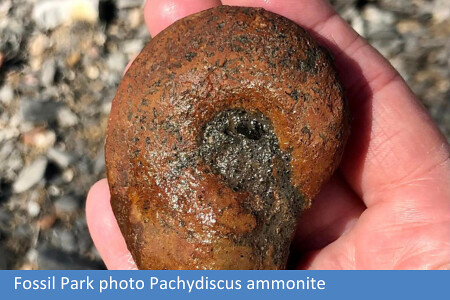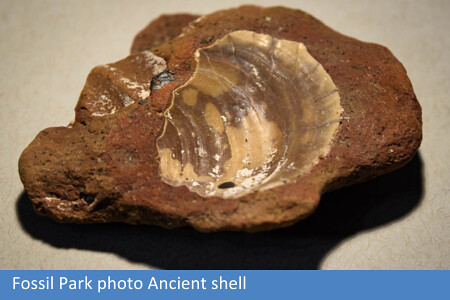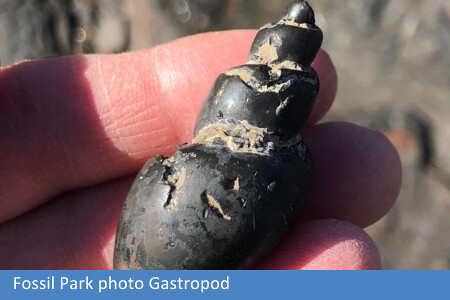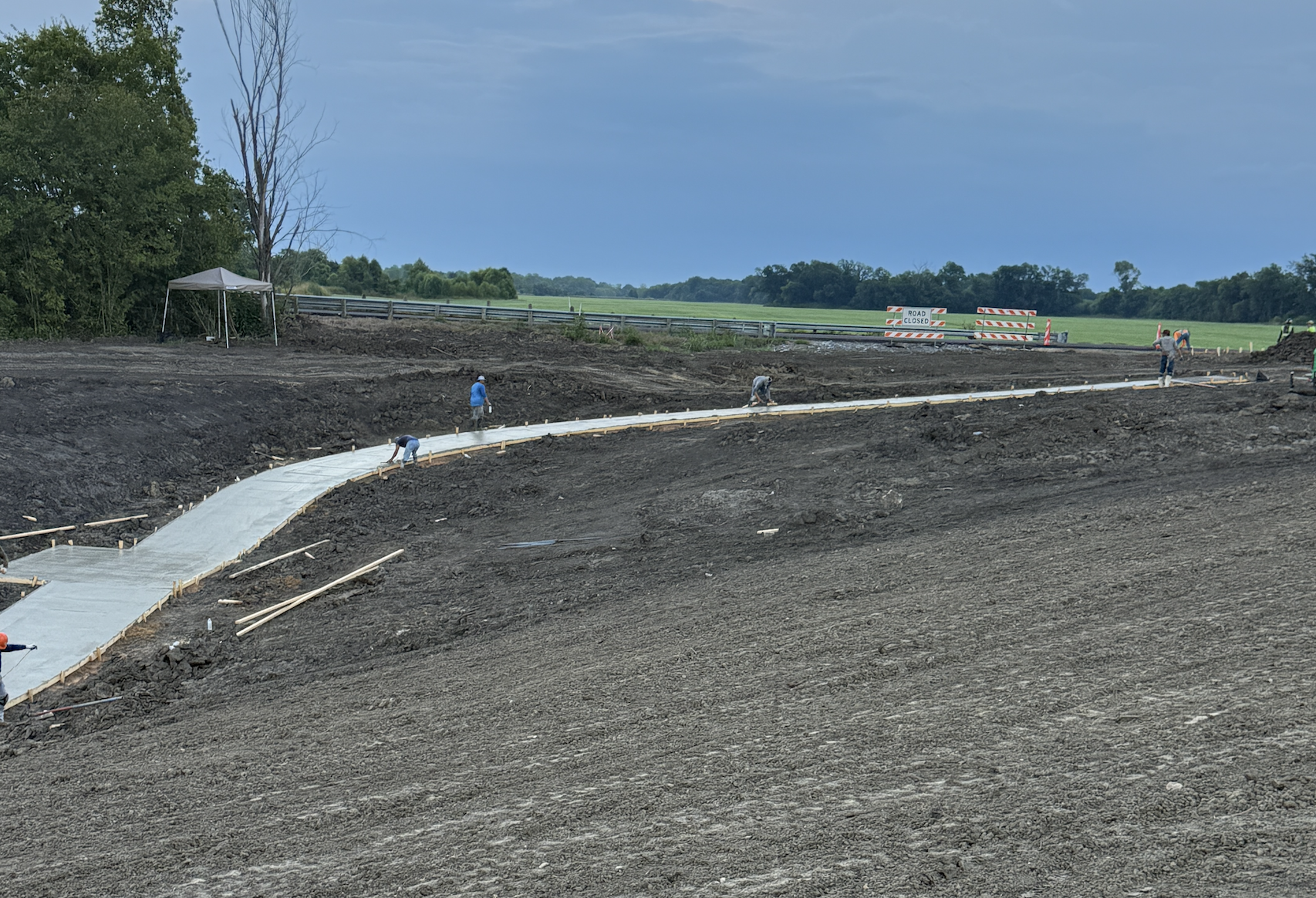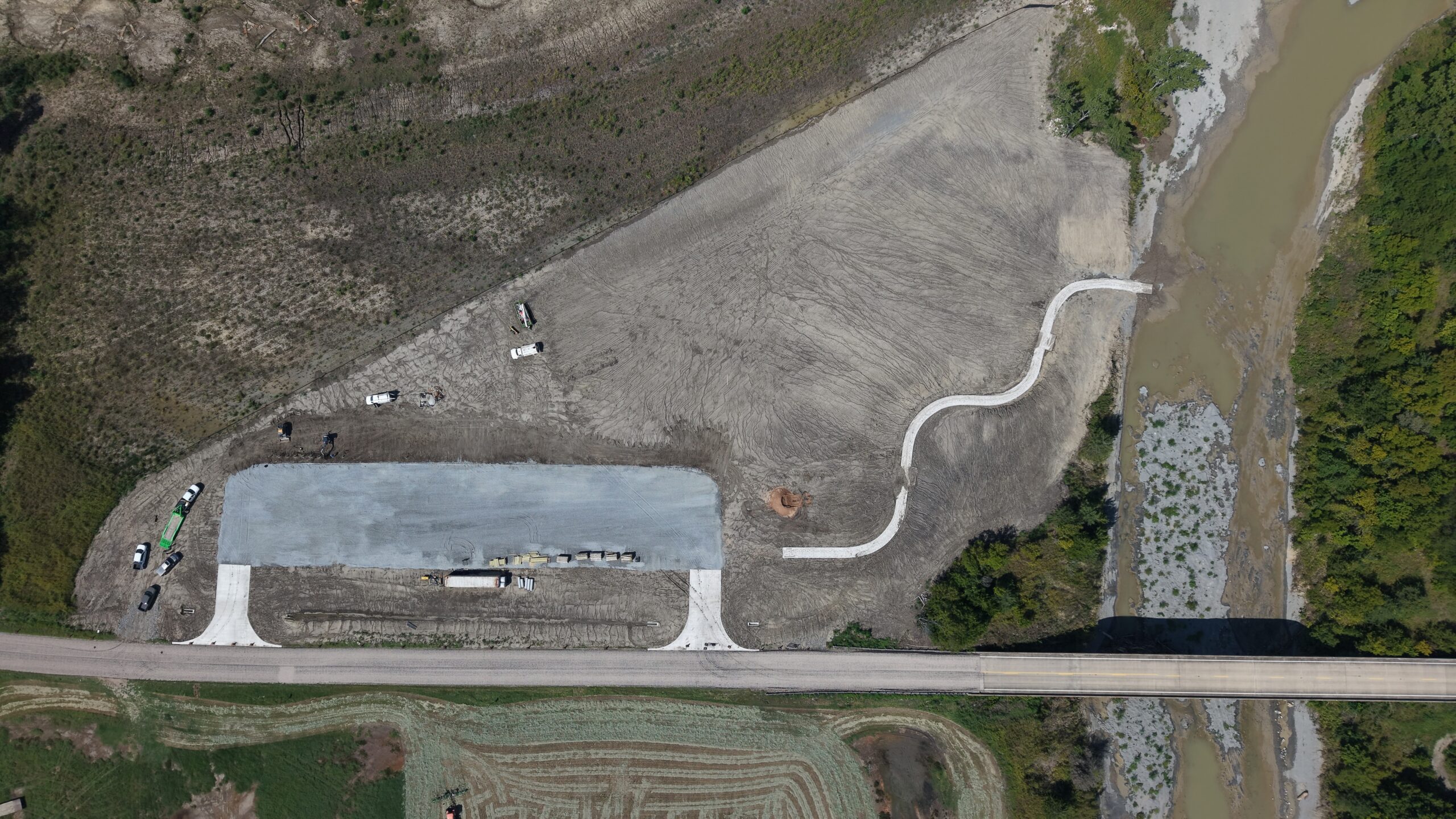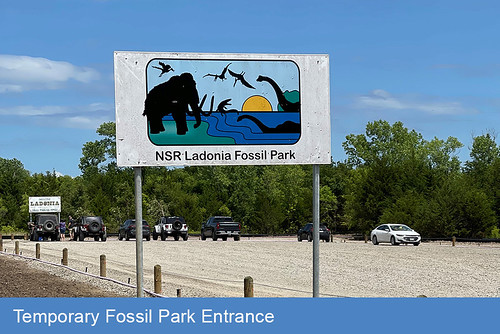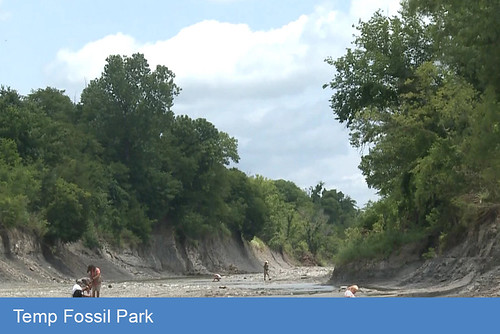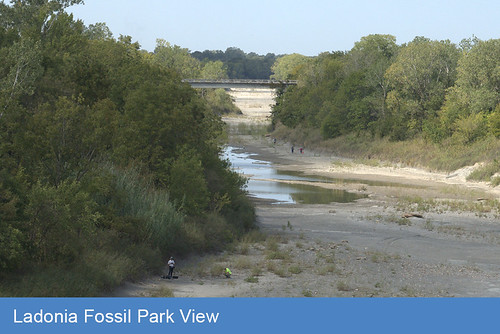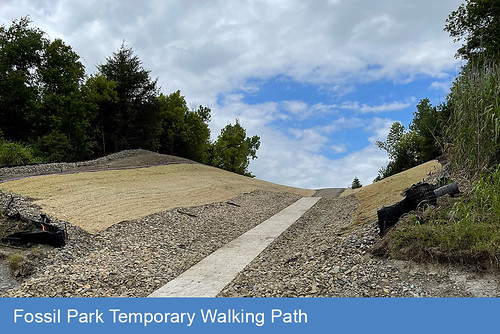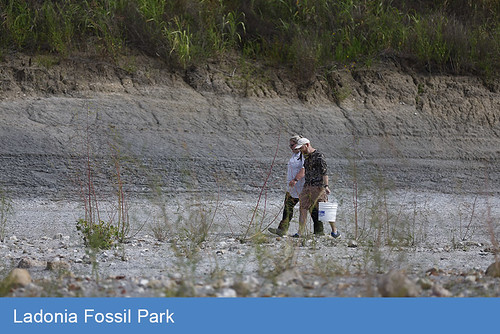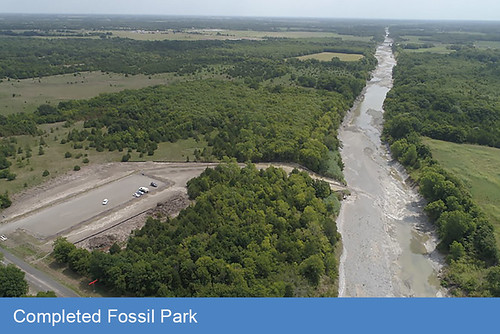Ladonia Fossil Park
Project Components

Reservoir
Roads & Bridges
Pipeline
Administration & Visitor Facilities
Mitigation & Watershed Protection
Ladonia Fossil Park
Ladonia Fossil Park
The temporary Ladonia Fossil Park was closed March 3, 2025 for on-going construction on the Leon Hurse Dam. Upper Trinity relocated the Ladonia Fossil Park to a temporary location east of FM 2990 and north of the North Sulphur River in the spring of 2021. As construction on the Leon Hurse Dam continues, water is backing up in the North Sulphur River channel causing the temporary park to be inaccessible. Construction crews will also be clearing the land nearby. The temporary park will be completely covered by the lake when it is filled.
New, Permanent Fossil Park
Coming Late 2025/Early 2026
While the temporary location is closed for safety reasons, Upper Trinity recognizes that the Ladonia Fossil Park is one of Ladonia’s most popular and visited attractions. The District is already working to build a new, improved fossil park in a permanent location on FM 904 downstream of the Leon Hurse Dam. Construction of the permanent Ladonia Fossil Park is well underway. The permanent park will offer improved amenities for local fossil hunters and visitors alike, including many of those that made the temporary site popular as well as some new features, including:
- Easy riverbed access
- A larger parking lot
- A covered pavilion
The new park is just downstream of the Leon Hurse Dam, close to where Baker Creek flows into the North Sulphur River. The Baker Creek watershed spans approximately 22 square miles, and both Baker and McClure Creeks will continue to flow naturally into the North Sulphur River, facilitating the discovery of new fossils at the park over time.The following map highlights where these creeks connect to the river and the location of the new Fossil Park.
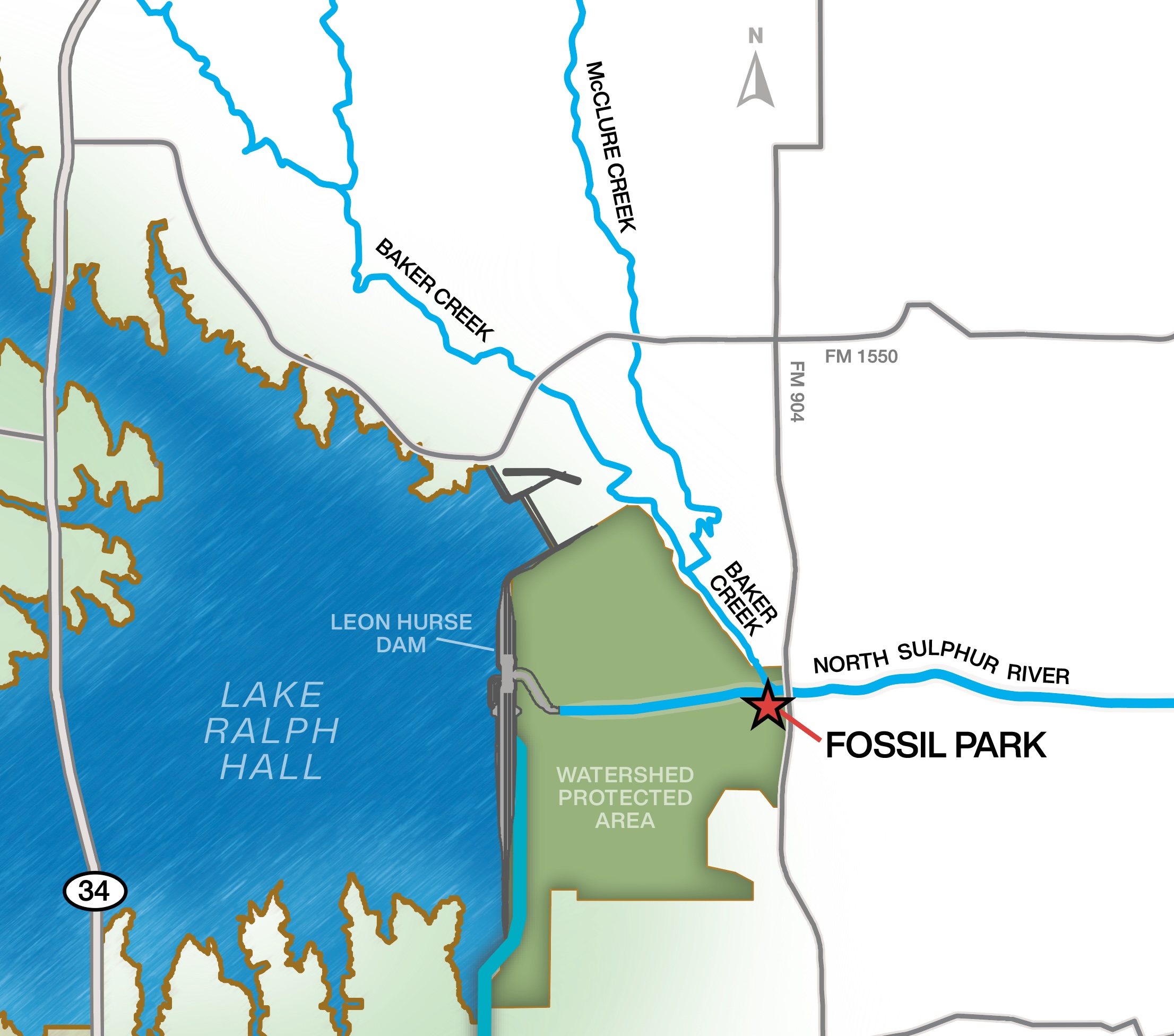
During periods of heavy rain, additional water may also flow over the Leon Hurse Dam spillway. The Lake Ralph Hall dam doesn’t have movable gates, so water only flows over its spillway and downstream when the lake is full (over the conservation pool level). This means that Upper Trinity doesn’t control these water flows, which will typically happen during heavy rain. Fossil hunters are always recommended to keep an eye on the weather, and hunting during possible flood conditions is never recommended.
The new park site was opened temporarily to host the 2025 Fossil Day celebration this October. Construction is ongoing, so the new park will permanently open to the public later this year or in early 2026. Fossil hunters are encouraged to check the Ladonia Fossil Park Facebook page (https://www.facebook.com/groups/739220792768941/) for current information on fossil hunting in the Ladonia area.
Fossil Finds
Photos credit: Cheryl L. McClure
Palaeontologic/Archeologic Protocols During Lake Construction
Statement Regarding Archeologic and Palaeontologic Protocols During Construction of Lake Ralph Hall:
For the construction of Lake Ralph Hall in Fannin County, Upper Trinity Regional Water District (UTRWD) operates under a permit with both the US Army Corps of Engineers and the Texas Historical Commission (THC). The permit requires careful handling and study of artifacts, fossils, and archeological items. All contractors working on Lake Ralph Hall job sites are trained on standard operating procedures for when a suspected artifact is detected.
UTRWD has contacted AR Consultants (ARC) to manage and execute handling, studying and recording artifacts and fossils found onsite. ARC is a highly regarded expert in archeology and paleontology and has worked on numerous sites in Texas and nationally. To date, hundreds of archeologists have conducted investigations within Lake Ralph Hall. Crews average about 50 in the field at a time. Findings will be compiled into final reports in compliance with the Texas Administrative Code Chapter 26. Redacted versions protecting site locations will be available to the public once the reports are filed with THC. Artifacts and records related to these studies will be curated in perpetuity at the Center for Archaeological Studies at Texas State University in San Marcos in accordance with the Texas Administrative Code Chapter.
Since the beginning of construction on Lake Ralph Hall, UTRWD has worked with the Perot Museum to identify, extract, and/or study significant fossil finds. This includes the 2022 discovery of a Tylosaurus on a section of the North Sulphur River owned by UTRWD. UTRWD worked with Perot Museum paleontologists to extract the specimen for further study at the museum.
Contact Info
Have questions or want more info?
- Join the “Ladonia Fossil Park” Facebook page for a community with answers about other fossil hunting locations nearby.
- Call the Ladonia Chamber of Commerce at (903) 266-1473.
New Fossil Dig Exhibit at Northeast Texas Children’s Museum
Parts of northeast Texas were covered by a sea some 145 to 65million years ago, where giant reptiles and fish lived and hunted. Mighty Mosasaurs, 40-foot-long aquatic reptiles, ruled the deep sea, and Xiphactinus, a 20-foot-long fish that hunted other fish, reptiles and birds, were common sea creatures. The Columbian Mammoth also roamed the plains of North Texas some 420,000 to 11,700 years ago.
Bones from these sea creatures and more recent animals have been found by fossil hunters along the North Sulphur River near Ladonia in southeast Fannin County.
The exhibit provides children the opportunity to “dig” for fossils, similar to visiting the Ladonia Fossil Park. Fossil hunting is an exciting adventure. It’s like stepping into a time machine where you can discover animals and plants that lived on earth thousands to millions of years ago.
Whether you’re a teacher, parent or fossil enthusiast, visiting the new exhibit is like taking a time machine to the prehistoric past, to learn about life in North Texas millions of years ago.
The new exhibit is sponsored by the Upper Trinity Regional Water District, Lake Ralph Hall, the Perot Museum, City of Ladonia and the Ladonia Chamber of Commerce. For more information about the Fossil Dig exhibit, visit https://netxcm.com/.


